Secret #7: I Believe in Heredity
 I believe in the simple principle of genetics, “Heredity is handed down from one generation to the next.” No one can start with mediocre pigeons and castoffs from several different fanciers, and hope to come up with anything that is close to an established family of pigeons that will pass on the needed quality genes and traits. Therefore, select from a family of pigeons that has bred continuous winners over a long period of time, at least 10 years in tough competition.
I believe in the simple principle of genetics, “Heredity is handed down from one generation to the next.” No one can start with mediocre pigeons and castoffs from several different fanciers, and hope to come up with anything that is close to an established family of pigeons that will pass on the needed quality genes and traits. Therefore, select from a family of pigeons that has bred continuous winners over a long period of time, at least 10 years in tough competition.
If you are not breeding from winners or children of winners, you are in trouble! This is where it all starts. All the time and money spent for care and training throughout the year can amount to hours of frustration, disappointment and expense. Pairing the best with the best does not necessarily guarantee success, but it definitely increases the chances of it.
In both the racing and breeding lofts, the true value of a pigeon will be found only by actual tests, either by flying or by the quality of young it produces. The true tests of a quality breeder are the performance and breeding success of its offspring, not its own race record. If a bird cannot reproduce itself or better, it is no good as a breeder and should be culled. Remember results will not be seen in one year. It will take 2 years to see any real evidence.
Secret #7: I Believe in Heredity By Bob Prisco
Sign up for the Pigeon Insider Pigeon Racing Newsletter, click here to learn more.

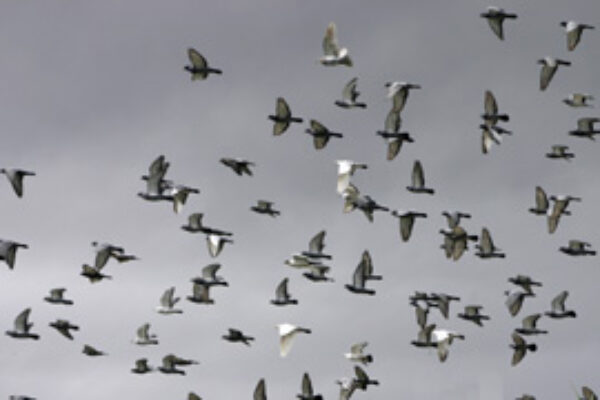
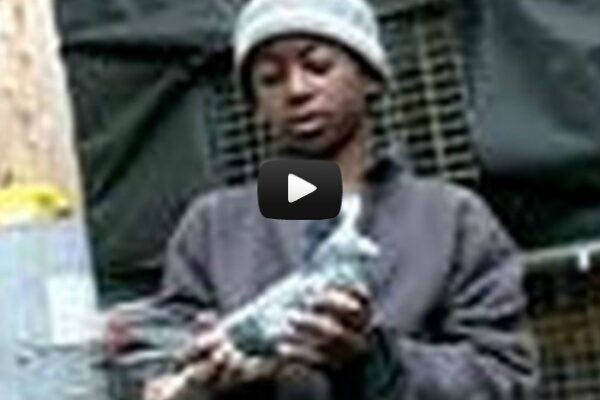
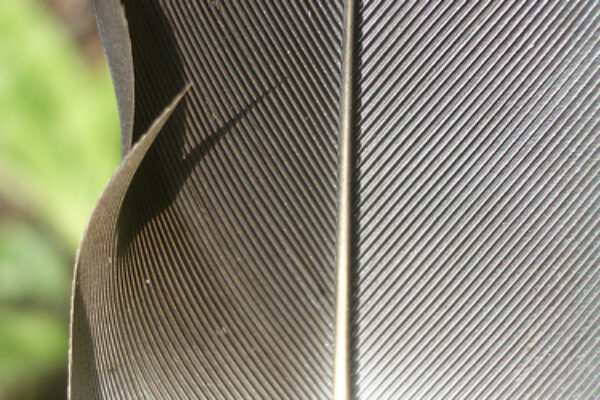
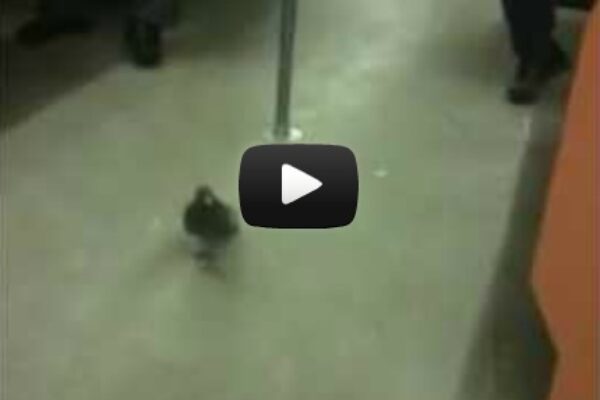
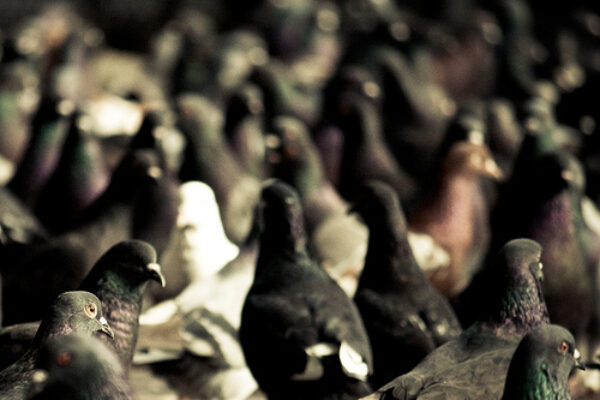
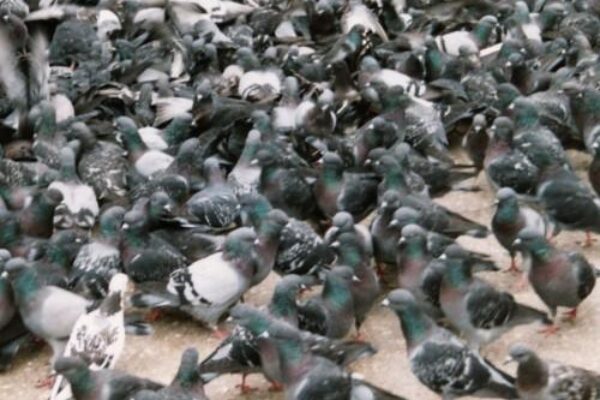


My loft partner< John Hayes, and I recently conducted an experiment with some of our racing homers. On September 30th I released 118 of our birds almost 600 air miles south from our lofts which are called "THE NO SWEAT LOFTS" that are located in Richmond, Kentucky. Of these 118 birds 83 of them were young birds. And these were truly an exceptional and great team of young birds as nice as you could ever want. I released the birds at dawn and the skies were clear over Florida. But it became clear that the birds soon had to contend with a tremendous northwest headwind pushing 25-30 MPH. This brutal wind held steady for some four straight days. This was simply too much to overcome and we did not get bird back until the third day, a yearling silver sion cockbird. As the time went by we got a bird here and there and they were all yearlings. Actually, these yearlings had been trained wekll the year before going out to 400 miles as young birds. But in fact these yearlings were probably not as physically superior as were many oif the young birds that were released with them. As I implied, this wqs a tremendous group of young birds and all of them had been trained out to 225 miles before this release. And with ample rest before testing them at 600 miles. On the 29th day a little hen made it back to our lofts. Another Sion. And this bird was only the fifth bird of the 118 to make it home. Lo and behold it was my favorite pigeon, the only two year old in the group, "CHATTANOOGA." She is a blue pencil splash hen that is small and very refined with superior wing and back structure; a very smart bird in all ways. Two years ago I had released her with other birds from 200 miles when she was a young bird. She had always been coming with the first group. But upon this 200 mile release from Chattanooga I noticed that she did not come home that day. About noon of the second day she came in, badly tattered. Ten of her twelve tail feathers had been ripped out of her and she had talon wounds through the back portions of her body. Because of her luck and valor and determination to get home I named her CHATTANOOGA and the following year did not train her. But this year I sent her on the 600 mile release that became so horrible due to the winds. And on the 29th day she managed to make it home. She was so badly "destroyed" that we nearly didn't recognize her / It was only after I looked up her band number that it suddenly dawned on me as to who she was. What a shock! But then, I was thrilled she had made it home no matter what she looked like. You see, she was wholly saturated in oil. And this oil looked to be of some age as it had dried on her in such a way that made her look as if some dull wax figure. I had had racing pigeons going on 54 years and in all my life I had never seen such a pigeon arrive home in her beaten condition. How on earth she managed to come home from 600 miles will always remain a mystery to us. She surely owns the heart and determination of a great pigeon. She may have looked horrible but to me she was beautiful. We began washing her with Dawn's dishwashing detergant and after ttwo thorough soakings she is now a little better but she will need many more such baths before ever getting back to her old self. One thing is certain, this little hen will NEVER e flown ever again. No more being hawkbait for her. From now on, she has found herself retirement and great care at all times. I plan to mate her to a young blue cockbird that has incredible bloodlines and we will see what comes of this with their own young birds in 2012.
What became very interesting to me is the fact that as of today I have yet to get a single young bird back from this 600 miles. Four of the birds were yearlings and then there was CHATTANOOGA which was a two year old. What is interesting about this is that the young birds outnumbered the other birds on a ratio of more than 3 to 1 . And as I have stated, these young birds were very well trained and I am guessing that at least 50 of them were actually better built in every physical way–stronger, etc—than their older rivals. And yet, they failed to match them in coming home. Based on training and phsical ability they should have beaten their older rivals, but they did not. This then set me to ponder as to what actually happened. And I based all my thinking on exactly what had happened throughout all this with me. I relied on no other outside sources for references as to influence my thinking one way or the other. And what I have concluded is that in fact it now seems quite obvious to me that in racing pigeons it is quite apparent that the homing instinct itself somehow continues to grow in a bird as the bird matures. It is not that the older bird itself is somehow physically superior but rather, its homing instinct. Just how this instinct is able to increase is still a mystery with me. And it is something I hav never seen any scientist study with any animals, ever.
I have been quite "rough" with our racing pigeons the past several years. Last year I took 32 young birds 700 miles away and only got one bird back which took her 6 weeks to make it home. I have been conducting these releases in order to define the blood that genuinely has the most keen homing ability as I know that it is this homing ability that is the singular most important character that any great racer has to have. And it is something you can only know by doing the things that I am doing. Once this homing instinct is learned then one can take the time to breed the better bodies , etc. for improvements. For me, such dabble with gnetics is rather simple.
Yes, I would love to learn just how it i that our great racing homers actually do swell with more homing instinct as they become older.
Blessings.
Earl Lowell "Robbie" / "No Sweat" Robbins, Jr.
207 Longview Drive
Richmond, Kentucky 40475
[email protected]
I’ve heard a few fanciers claim that they can never breed a good racer out of birds that were great racers themselves. And my best all time breeder was a unbanded mixed strain blue check cock that I called, “PEG LEG.” He had trouble getting home from 50 miles. But oh what great YBs he bred with almost any hen and also what great grandchildren–all of them excelling at any kind of race no matter where across the USA. Charles Heitzman always said to me that the apple never falls far from the tree. And in his real breeding scheme he bred down from many YBs that went 500 miles. As you can appreciate, these are good birds. Heitzman believed as do I that your best racers will generally be bred down from your best racers. Its up to you to attempt to improve with each generation. Once you find the hottest homing instinct then you can build that F-18 fighter jet body arounbd it if you know what is what. And really, only a handful of racing pigeon fliers genuinely do have the talent to breed pigeons physically superior to their parents.That’s one of the rsons I smile when many of the very wealthy fliers pay exhorbrant prices for pigeons and yet they have no real clue as to what is the genuine best way to breed them. If it were just a matter of breeding one champion to another champioin then every year the Kentucky Derby would be predictable.The best bred horse for that course this year happened to have finished in the eight hole. If you can find blood that flies consistently generation after generation after generartion then you are on the right road. Particularly if it is distance blood. Any decent racer can fly the shorter distances its the long ones where the clues to what composes a real champion are found. Heitzman made a big mistake not flying his birds the last 25 years of his life. It hurt them in a big way. But the blood remained there and he was always counting on anyone that got his birds to work diligently with them to awake the many linebred YBs that he later in life produced. I have been working as such for the past five years. Last year all the Heitzman Sions went 400 miles and one of the Sions went 700 miles–a new record for the state of Kentucky. This year, all my YB sions will have to go at least 500 miles if they are to earn a roost in THE NO SWEAT LOFTS. Its strange to sit quiiet in your loft and look at the racers that have worked hard and flown all year to be there vs. the ones that may have not. If you are a real pigeon man you will see the differences; I think they sometimes look like lean and hungry wolves rady somehow to take on the world in order to survive–in them you will find tomorrows champions.. ROBBIE ROBBINS AKA “NO SWEAT.” [email protected]
HI No Sweat,
Great article. Makes a lot of sense.
Ron
I cant agree more Mike, I’ve been experiencing with supposedly top loft birds and have been a bit dissapointed, this being for long distance birds , if a bird cant fly 900 km on the day under normal weather conditions I wont breed from it, and then I will only find one out of six worth keeping after they are 2 year olds. Keep up the great site I really enjoy the articles, comments and doing things differently, I am way down under (New Zealand ) and flying birds from Christchurch to Whangarei (960km ) is every fanciers goal. Greetings Pim(Pigeonwood and Farsidelofts.)
There is some good info there , as i have bread from winners with No sucsess.
Heredity is handed down from one generation to the next this is totally true
Nes comers to the sport of Racing pigeons should obtain good! young birds in the beginning. From local lofts that are on the top of the race sheet that fly the same race course as you intend to fly. Try to attain birds that have a family history of being above average racers. That is ask yourself is the loft in the top ten frequently, has the loft got a history of consistent race winners? There is not much sense in spending a lot of money buying birds from out of the Country or from a different part of the Coubtry that you live in. Until you prove to yourself that you are able to fly pigeons with the same success as the loft where you obtained the birds from. If you can compete on the same level as the loft where you obtained the stock from. You can then better the quality of your pigeons by purchasing or importing stock to enhace the quality of your family of racers..
A friend in the sport
Mel
I agree breeding from winners one has a better chance of success then not. But that’s only one element of many that needs to be in place. A good handler can out perform the fella down the street that has the big money birds. There’s a lot of variables that need to be lined up to be constantly at the top of the sheet. Common sense is huge. To have an adventurous nature, experiment. One does not have to accept the normal approach, especially if his other committments (family-work-God)need time to. One should not be afraid to try new things or come up with new ideas not only with the birds but the loft, training, feeding. I always say listen, learn watch you will educate yourself.
Best advise I have heard in a long time.I am very fortunate to have birds that date back to 1956 and they are still breeding federation classic ,club,division winners every week,so it is definately in the genes.I my case winners are breeding winners,this last season I had 2x triple winners and a double winner,plus 5 single winners.
Congratulations on the start of an EXCELLENT debate!!! This is why I love this site and what you are doing for pigeon fanciers all over the world. You need good genetics- but a WHOLE lot more! I happen to agree with both well presented arguments. If you are new to a club, new to racing, you are highly unlikely to succeed if you don’t start with birds with physical, mental and emotional characteristics as good as the lofts your competing with. However, just because you have the money to buy the best birds in the world, they’re not going to build their own loft, run their own health program, train themselves both for direction and distance, that is up to you, their owner and loft manager. Fantastic birds don’t fall back-asswards into history- they are driven there by top flyers. We should probably stop blaming the birds so much. I’m still not a cull freak- I believe in controlling the breeding- only breed your best to best, and toss any eggs from lesser birds. I’ll cull quickly to eliminate a disease (thank God haven’t had any tough trouble there in decades) and I will pop the head off any bird that destroys young- I don’t care if he is gorgeous George and flies 500 mph. The bird shouldn’t have any motivation to skin the head of a squeaker if there is adequate room and no overcrowding and pairs aren’t inadvertently separated.
I tend to disagree with this premise. Quality in today’s racing pigeons is easily found. It is a myth to believe there is such a thing as “superior stock”. Of course you can’t win with birds you found on the docks, however, most people with any good racing stock can provide you with a start. The group of pigeons that responds to your particular program are what you really need. Not every high quality bred family of birds will do that and there is no genetic family of birds that will respond to every handler. The very best families will do you no good if they do not respond well to your handling and this rule applies to the best of handlers so genetics plays less of a role than you might believe.
In this day and age it is fairly easy to clone racing pigeons. It does not happen very often because the results are disheartening. A clone is the exact genetic copy of the original. If you cloned the very best speciman of a racing pigeon you could find 100 times you may never get the same racing results from any of the 100 that the original exhibitted. In fact, the odds are about equal to those you would find in any quality breeding program. Out of the 100 exact copies that were created, you would be lucky to obtain results where more than one or two of these birds are superior performers. Here is the truth in genetics, proving once again, that a true racing champion is more likely to come as a result of its environment than from genetics.
Hi Bob,
I could not agree more,good breeds good,strays breed strays.In my loft they get three years,if after this time they have never been in the clock,or in the stock loft, never bred a bird to time in,then they are all destined for the soup kitchen.
It is important when adding new stock, not only to purchase from a winning loft but from a loft that’s birds breed winners in other lofts,remember you are buying the birds not the fancier.
enjoy your birds Mike..